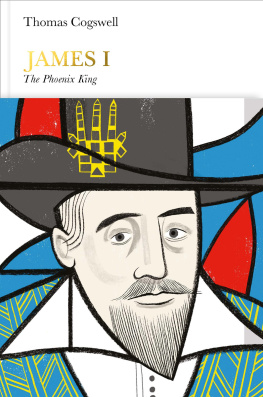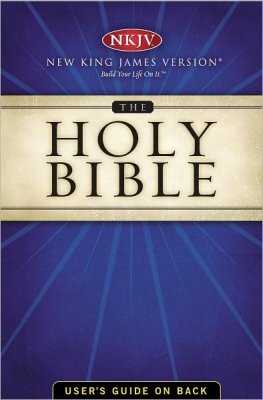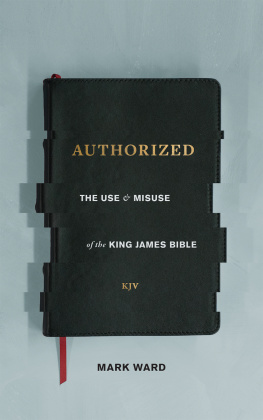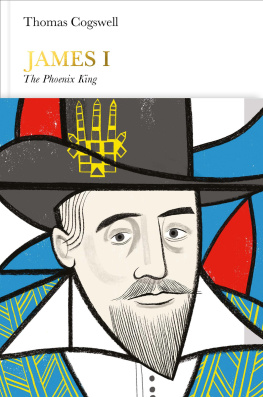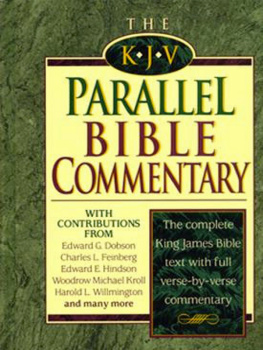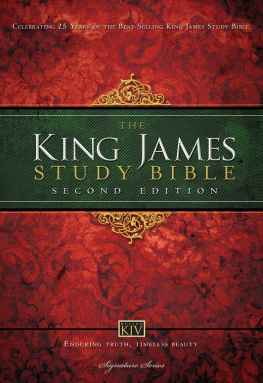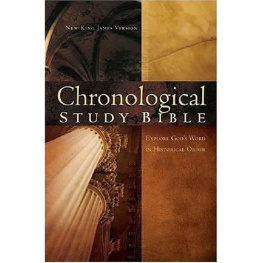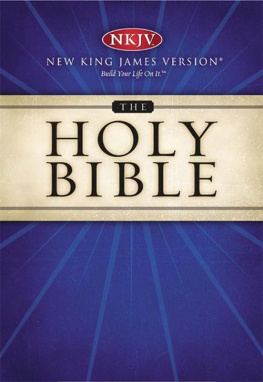Contents
Acknowledgements
I am grateful to Simon Winder for asking me to write this volume and then for gently nudging me to finish it. On the editorial side, Anna Herv effortlessly sorted out several thorny issues, and Kate Parker admirably succeeded in the unenviable task of smoothing out my unruly prose.
It was my extraordinary good fortune to have written it while at the Huntington Library in San Marino, California, amid its exemplary collection of English and Scottish materials. For their good humour while I repeatedly pestered them, I am much obliged to the Research Director, Steve Hindle; to his staff, Juan Gmez and Carolyn Powell; and to my neighbours in the Upper Munger, Dena Goodman, Amanda Herbert, Daniel Immerwahr, Adam Mosley, and Carol and Franois Rigolot. High praise is due to Norm Jones, who provided me with Elizabethan comparisons and much advice, and to Will Cavert who, over coffee at the library, supplied a wonderful reference to Jamess obsession with dogs. Every morning as I badgered them for entrance as early as possible, the guards, especially Lou Ann Bonanza, James Michre, Marco Prez and Patricia Vanley, daily taught me that it is possible to be dutiful and kind.
Finally, this book owes a great deal to many conversations with Alastair Bellany and to our recent work, The Murder of King James I. Richard Cust, Ken Fincham, James Knowles, Peter Lake, Roger Mason and Michael Questier gave me invaluable assistance with early drafts and Georgia Warnke with life.
The book is dedicated in memory of my brother, who would have enjoyed reading about King James.
Penguin Monarchs
THE HOUSES OF WESSEX AND DENMARK
| Athelstan | Tom Holland |
| Aethelred the Unready | Richard Abels |
| Cnut | Ryan Lavelle |
| Edward the Confessor | James Campbell |
THE HOUSES OF NORMANDY, BLOIS AND ANJOU
| William I | Marc Morris |
| William II | John Gillingham |
| Henry I | Edmund King |
| Stephen | Carl Watkins |
| Henry II | Richard Barber |
| Richard I | Thomas Asbridge |
| John | Nicholas Vincent |
THE HOUSE OF PLANTAGENET
| Henry III | Stephen Church |
| Edward I | Andy King |
| Edward II | Christopher Given-Wilson |
| Edward III | Jonathan Sumption |
| Richard II | Laura Ashe |
THE HOUSES OF LANCASTER AND YORK
| Henry IV | Catherine Nall |
| Henry V | Anne Curry |
| Henry VI | James Ross |
| Edward IV | A. J. Pollard |
| Edward V | Thomas Penn |
| Richard III | Rosemary Horrox |
THE HOUSE OF TUDOR
| Henry VII | Sean Cunningham |
| Henry VIII | John Guy |
| Edward VI | Stephen Alford |
| Mary I | John Edwards |
| Elizabeth I | Helen Castor |
THE HOUSE OF STUART
| James I | Thomas Cogswell |
| Charles I | Mark Kishlansky |
| [Cromwell | David Horspool] |
| Charles II | Clare Jackson |
| James II | David Womersley |
| William III& Mary II | Jonathan Keates |
| Anne | Richard Hewlings |
THE HOUSE OF HANOVER
| George I | Tim Blanning |
| George II | Norman Davies |
| George III | Amanda Foreman |
| George IV | Stella Tillyard |
| William IV | Roger Knight |
| Victoria | Jane Ridley |
THE HOUSES OF SAXE-COBURG & GOTHA AND WINDSOR
| Edward VII | Richard Davenport-Hines |
| George V | David Cannadine |
| Edward VIII | Piers Brendon |
| George VI | Philip Ziegler |
| Elizabeth II | Douglas Hurd |
Further Reading
Anyone trying to understand James VI and I should begin by examining his remarkable output of poetry and prose, and in this task it is useful to begin with Jane Rickard, Authorship and Authority: The Writings of James VI and I (Manchester: Manchester University Press, 2002). Fortunately there are several excellent modern editions, and chief among them are: The Letters of King James VI and I, edited by G. P. V. Akrigg (Berkeley, Calif.: University of California Press, 1984); King James VI and I: Political Writings, edited by Johann Sommerville (Cambridge: Cambridge University Press, 1994); and The Poems of James VI of Scotland, edited by James Craigie, 2 vols (Edinburgh: Scottish Text Society, 1955 and 1958). His personal letters to Somerset and Buckingham are particularly revealing, and pending the publication of a careful edition of these with contemporary spellings and an analysis of their provenance, there is much to applaud in King James and Letters of Homoerotic Desire, edited by David Bergeron (Iowa City: University of Iowa Press, 1999).
Given D. H. Willsons palpable dislike of James, a sentiment that runs through his King James VI and I (New York: Henry Holt, 1956), we badly need a new, full-scale biography of the man. Until then, Willsons book should be read together with Alan Stewarts perceptive The Cradle King: A Life of James VI and I (London: Chatto & Windus, 2003). Those readers in more of a hurry will enjoy Pauline Croft, King James I (London: Palgrave Macmillan, 2002), and Roger Lockyer, James VI and I (Harlow: Longman, 1998). Of the many older biographies, few can surpass the insights in Caroline Bingham, The Making of a King: The Early Years of James VI and I (London: Collins, 1968).
Jenny Wormald began the Jamess scholarly re-evaluation with James VI and I: Two Kings or One?, History, 67 (1983), pp. 187209, and Alan Stewart presented a new appreciation of him in Government by Beagle: The Impersonal Government of James VI and I, in Renaissance Beasts: Of Animals, Humans and Other Wonderful Creatures, edited by Erica Fudge (Urbana, Ill.: University of Illinois Press, 2004), pp. 10115. Jamess sexuality has attracted much recent attention; among the new works, see Michael Young, King James VI and I and the History of Homosexuality (London: Palgrave Macmillan, 2000), and David Bergeron, Royal Family, Royal Lovers: King James of Scotland and England

